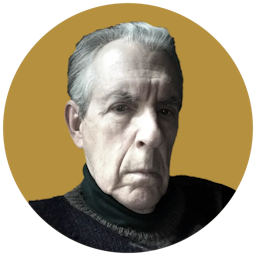How To Make a Marilyn Monroe
This article is from the archive of The New York Sun before the launch of its new website in 2022. The Sun has neither altered nor updated such articles but will seek to correct any errors, mis-categorizations or other problems introduced during transfer.

No student of biography – and certainly no devotee of Marilyn Monroe biographies – should be without “The Many Lives of Marilyn Monroe” (Metropolitan Books, 384 pages, $26). Nevertheless, caveat emptor: This work has more than a whiff of the academy, the stale air of a mind too long preoccupied with texts, too little engaged with the living stuff of biography.
I know the feeling. In the summer of 1980, I set out to write an academic study of the Monroe biographies, seeking to assess what even then was a burgeoning industry that made reviewers groan, “Not another Marilyn Monroe biography!” After putting in six weeks or so of dutiful reading, I got anxious. I wanted to know more. I wanted to talk with people who had known Monroe, and I wanted to interview the biographers.
Eventually I produced “Marilyn Monroe: A Life of the Actress” (1986), which includes an opening chapter assessing the other important biographies, especially the work of Maurice Zolotow and Fred Guiles, both of whom not only submitted to my intense questioning, but also encouraged and aided my own investigations.
I wish Sarah Churchwell had done some research of this kind. She treats biographers with a curious high-handedness – dismissing many of their interpretations as simply projections of prejudice. She has a point, of course, for while she often compliments me – even suggesting my biography is the one Monroe herself might have liked – she also notes those instances where I tend to psychologize, using facile theories where evidence is lacking or where more obvious explanations come to mind.
But Ms. Churchwell shows she knows too little about biography when she supposes that my dismissal of Monroe’s childhood rape story, for example, reflects some kind of male/cultural bias. I did not accept the rape for several reasons. For starters, Monroe had a self-dramatizing desire to exaggerate her traumatic childhood. I went over this evidence with Fred Guiles, who had produced a comprehensive biography and had interviewed many people who knew Monroe as a child and young woman.
Of crucial importance, though, was my interview with Steffi Skolsky, daughter of gossip columnist Sidney Skolsky, who was one of the prime inventors of Monroe’s PR biographies. She reiterated her late father’s skeptical comments about Monroe’s childhood abuse stories, explaining that he saw how Monroe tended to inflate them. None of this proves that Monroe was not raped, but those closest to her doubted the story. Even so, Ms. Churchwell, who quotes Skolsky’s suspicions, persists in believing biographers are to blame for refusing to accept Monroe’s version of events.
Ms. Churchwell is right to question biographers’ motives and biases, but I wish she had handled some of the evidence herself – or at least made a few phone calls to biographers to get a sense of how we actually work. She is very hard on Anthony Summers, for example, and though I disagree with some of his interpretations, I know from following in some of his tracks and by talking with him that he turned up valuable evidence.
The same is true for Norman Mailer, who gets a very bad rap in this book. Ms. Churchwell seems to think he is the only biographer who writes books to make money. She entirely misses the fact that Mr. Mailer shook up the world of biography, asking very pointed questions about the genre itself. His work inspired me to become a biographer. I concede that Ms. Churchwell scores telling points against some of his more foolish speculations. But Mr. Mailer, more than any previous biographer, showed the extent of Monroe’s ambition. He knew how to build on Zolotow and Guiles to show a woman who had nothing less than a Napoleonic will.
Where Ms. Churchill shines is in her anatomy of the biographer’s rhetoric. Too often biographers engage in a kind of circular logic and paralipsis (a new word for me), which means indulging in a story that the biographer then dismisses. Messrs. Mailer and Summers are convincingly arraigned on these charges.
And “The Many Lives of Marilyn Monroe” is a wonderful introduction to the field. Ms. Churchwell has deftly sorted out the merits of the major contenders – Mr. Mailer, Gloria Steinem, Mr. Summers, Donald Spoto, Barbara Leaming, myself – although she does not seem to realize just how much we owe to Zolotow (who knew Monroe and saw her in action on movie sets) and Guiles (who interviewed crucial witnesses no longer available by the time other biographers arrived on the scene).
Ms. Churchwell’s scope extends beyond biography, in fact, to include the entire image-shaping apparatus that made Marilyn Monroe – the advertisements, photographs, magazine stories, memoirs, documentaries, docudramas, the art of Andy Warhol, and others. To disagree with some of her conclusions and to wish she had done some legwork is not to dismiss what is an impressive, even encyclopedic effort to provide some order to the chaotic world of – if you will pardon the academic expression – Marilyn Monroe studies.

